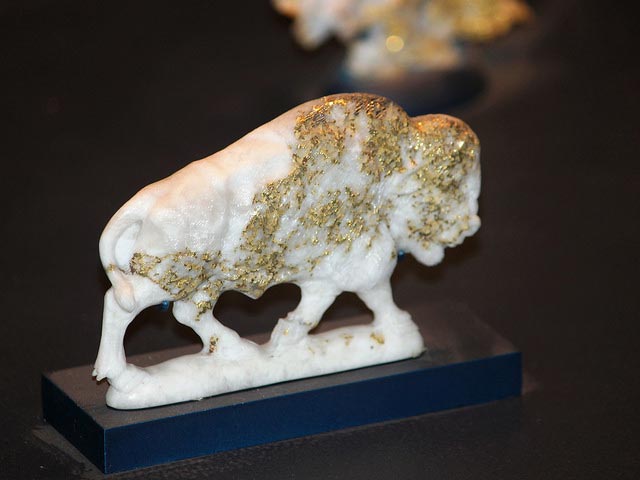Simple Design Ideas for Freeform Gems
You can learn gem carving by practicing simple designs. Let the native shapes of stones inspire freeform gems you can cut for many purposes.
3 Minute Read
Look at Native Gem Shapes for Inspiration
If you're looking for simple design ideas, look at the native shapes of your gems and transform them in your mind's eye into practical household objects. Their colors and patterns will add beauty and interest to them. You can also let your imagination take over and visualize freeform gems as jewelry pieces or stand-alone carvings.
Freeform Gems as Useful Items
The useful items that can be made from stone are almost limitless. Take a look around your home and imagine what small utilitarian objects could be re-done as freeform gems.
(And, if you practice creating these objects on your leftover rough, you might even squeeze some value out of otherwise unsellable fragments).
Paperweights
Nothing is simpler to carve than a paperweight. Take any nice looking mineral, shape to suit your fancy, and polish it.
Here's a beautiful paperweight I carved with minimal work. At first, this quartz and pyrite piece in my scrap box was one of the ugliest stones imaginable. Now, I'm proud of this specimen.
I started working with it just to see what I could do with it. As I got into the stone, I found layers of gold interspersed with the pyrite. The challenge was to finish shaping and polishing it, without removing any more gold than absolutely necessary. The lesson here is to keep it simple. In most cases, doing the minimum to enhance a stone is better than trying for something elaborate. This is especially so if you're just learning.
Custom Carved Pulls
If you have lights with pull cords, you can create a custom pull. Briolette shapes are traditionally used for pulls (whether they're gems or other material). However, you can adapt most cab shapes for this purpose. Even a simple quartz crystal will make an excellent pull if it's drilled or has a groove cut around the end to attach the cord.
German lapidaries are fond of making doorknobs and drawer pulls from agate. They can add a nice touch to your entryway or custom furniture.
Freeform Gems as Jewelry
Ear jackets are a type of jewelry well suited for freeform gems. They're small and simple carving projects. A flower cut from colorless quartz makes a beautiful accent. A flower cut from colorful lapis lazuli or ruby takes on another dimension.
This pair of ear jackets was cut from a piece of yellow and orange agate. They are shown here with sapphire and pearl to demonstrate their versatility.
These were cut primarily with cabbing techniques. Carving tools were used to create a depression for resting the earring. This is important, since the post needs to go through both the ear jacket and the wearer's ear. The ear jacket must be thin enough to be worn comfortably.
Freeform Gems as Stand-Alone Carvings
Not every gem has to be a utilitarian object or a jewelry piece. Some carvings are created simply for their beauty. These freeform gems are classed as stand-alone carvings. Frequently, these are stunning likenesses of people, animals, or common objects. However, they don't need to be representational or even complex.
Here are two examples that show how varied yet simple stand-alone carvings can be. The piece on the left is lapis cut for maximum yield. Accents were then added for interest. The piece on the right is a particularly attractive piece of banded agate with some druzy crystals on the end. The carvings simply follow the natural pattern in the stones, enhancing both the color and the pattern. There's no way to set these gems. Nevertheless, I'm very happy to have these little jewels in my display cabinet.
Donald Clark, CSM IMG
Donald Clark, CSM founded the International Gem Society in 1998. Donald started in the gem and jewelry industry in 1976. He received his formal gemology training from the Gemological Institute of America (GIA) and the American Society of Gemcutters (ASG). The letters “CSM” after his name stood for Certified Supreme Master Gemcutter, a designation of Wykoff’s ASG which has often been referred to as the doctorate of gem cutting. The American Society of Gemcutters only had 54 people reach this level. Along with dozens of articles for leading trade magazines, Donald authored the book “Modern Faceting, the Easy Way.”
Related Articles
Quartz Polishing Survey Results
How to Identify Synthetic Rough in Gemstone Parcels
How to Cut a True Checkerboard Heart
Getting the Best Gem Yield from a Crystal
Latest Articles
Opal Buying Guide
Amethyst Sources Around the World: The Geological Story Behind These Purple Gemstones
Brazilianite Value, Price, and Jewelry Information
Ruby-Glass Composites vs Leaded Glass Clarity Enhancements
Never Stop Learning
When you join the IGS community, you get trusted diamond & gemstone information when you need it.
Get Gemology Insights
Get started with the International Gem Society’s free guide to gemstone identification. Join our weekly newsletter & get a free copy of the Gem ID Checklist!
